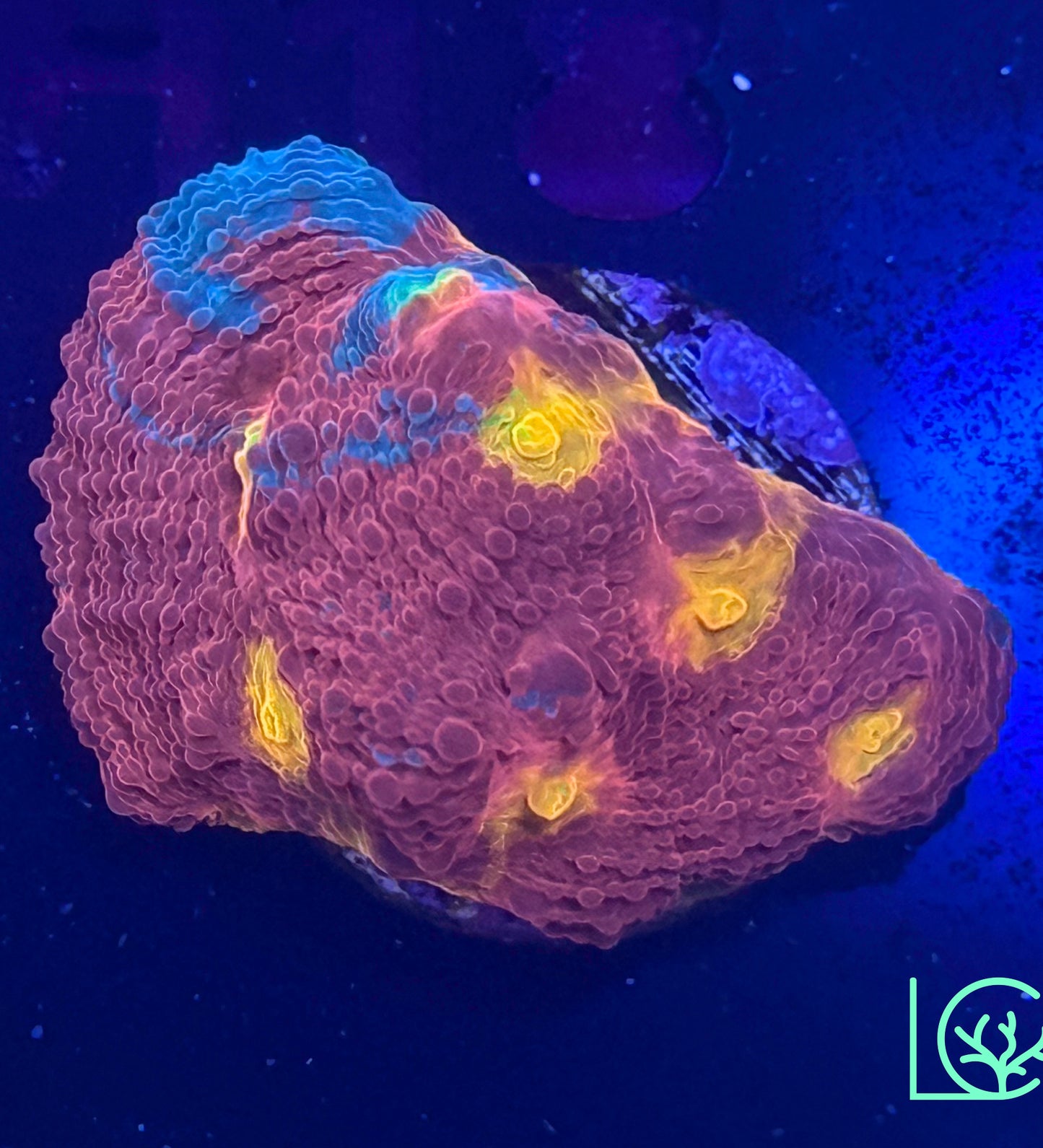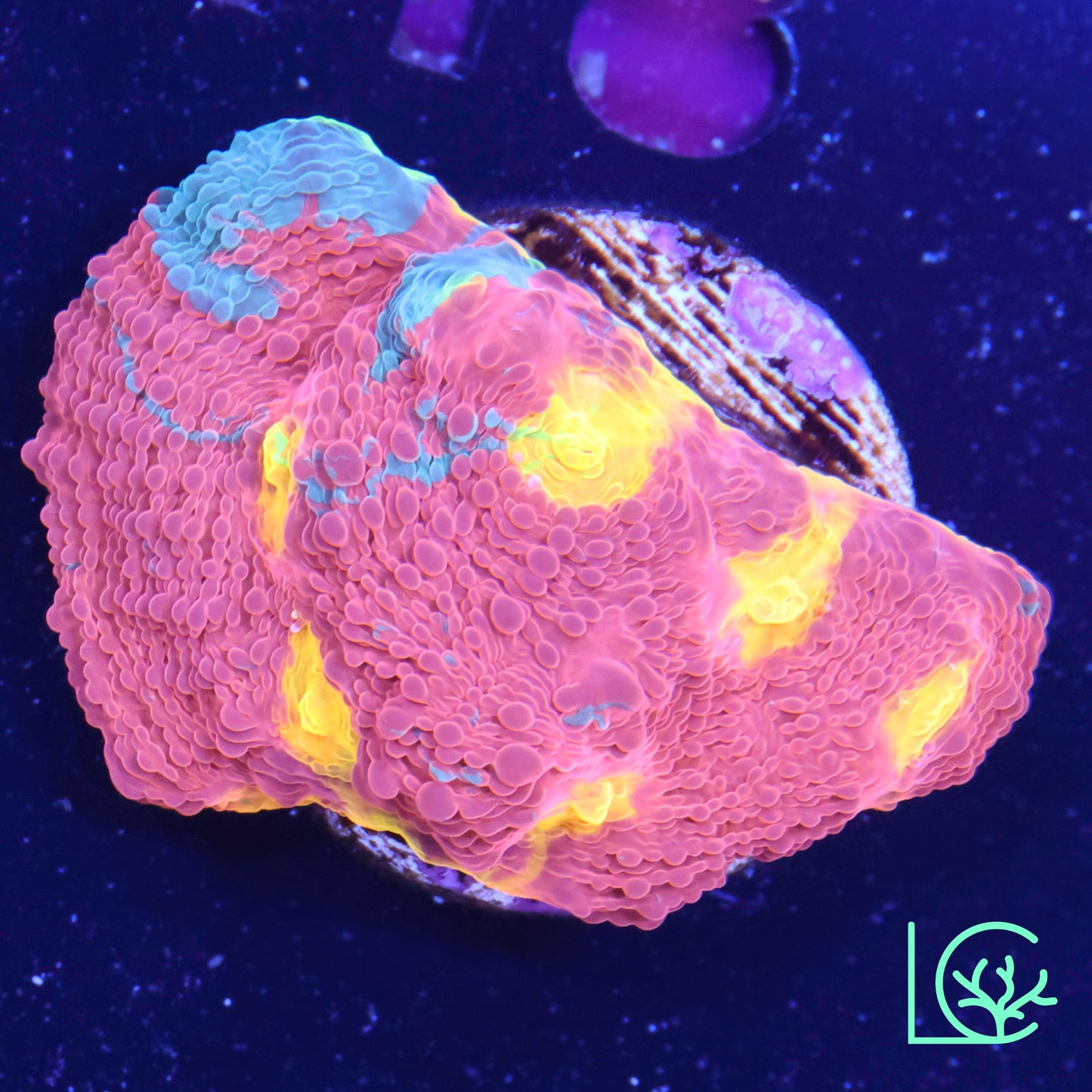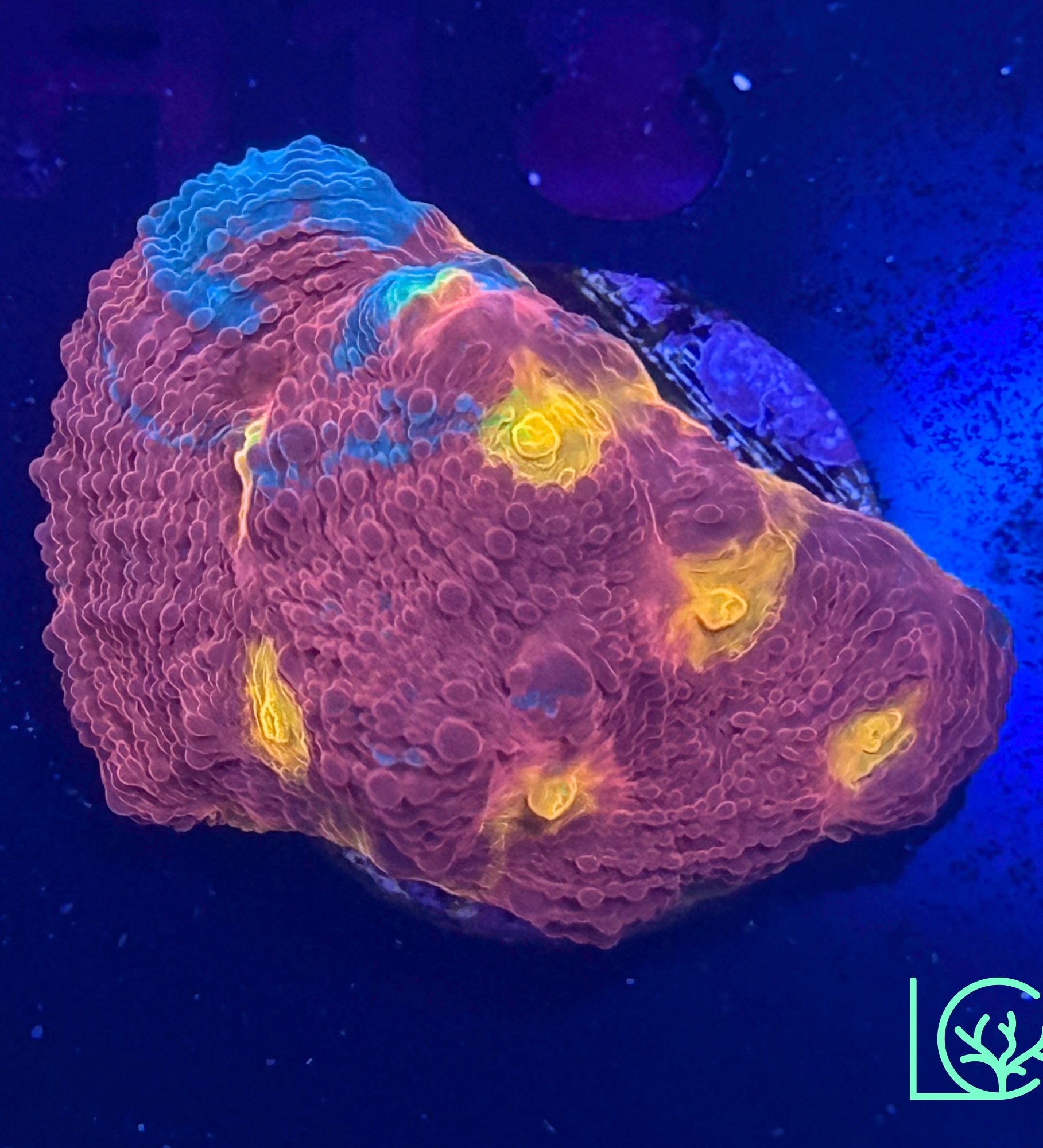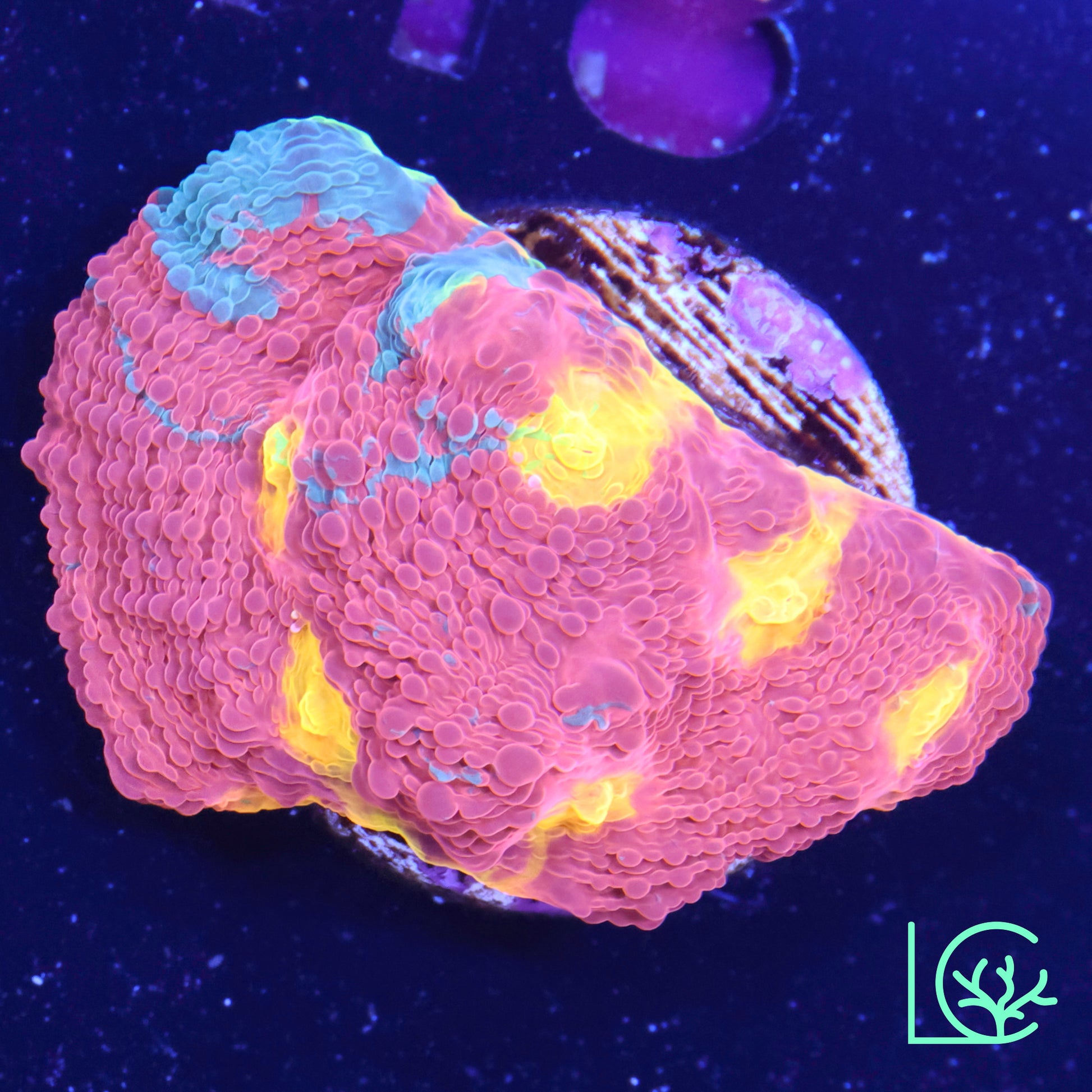- Description
- Reviews
Lush Corals presents the WWC Jellybean Chalice
This WYSIWYG frag is in excellent health and has been fully aquacultured in our systems for years to ensure our customers receive healthy and pest free coral.
This frag is photographed on a 3/4" frag plug for sizing.
ABOUT CHALICE CORAL
Chalice corals are vibrant, encrusting large polyp stony (LPS) corals known for their intense colors, unique textures, and eye-catching growth patterns. They come in a wide variety of color combinations and often feature bright mouths and contrasting rims. Chalices are moderately challenging and prefer low to moderate light and gentle flow, making them ideal for shaded spots in reef tanks.
Lighting Requirements for Chalice Coral
Chalice corals thrive in low to moderate lighting and often display their best coloration under subdued conditions.
-
Ideal PAR Range:
50–150 PAR -
50–100 PAR: Ideal for maintaining rich colors and reducing the risk of bleaching.
-
100–150 PAR: Can be tolerated by many chalice varieties, but gradual acclimation is recommended.
-
Spectrum:
-
A blue-dominant spectrum (420–470nm) enhances fluorescence and pigmentation.
-
A full-spectrum mix of blue and white light supports healthy growth, as long as intensity is controlled.
-
Lighting Type:
-
Chalice corals do well under LEDs, T5HO, or metal halide lighting when PAR is kept within range.
-
Placement Tips:
-
Best placed in shaded or lower areas of the tank, on the sandbed or lower rockwork, away from intense light zones.
Water Flow Requirements for Chalice Coral
Chalice corals prefer low to moderate, indirect water flow. Too much flow can damage their delicate tissue, while too little may lead to detritus buildup.
-
Flow Type:
-
Low to moderate, indirect flow is ideal.
-
Aim for a gentle current that keeps the coral clean and supports nutrient exchange without causing tissue retraction.
-
Why It Matters:
Chalices have fleshy, encrusting bodies that are sensitive to strong currents. Proper flow helps prevent bacterial buildup and supports healthy polyp extension. -
Placement Tips:
Place them in sheltered areas of the tank, like on the sandbed, in rock crevices, or lower tank zones, away from direct powerhead streams.
No additional information available.





